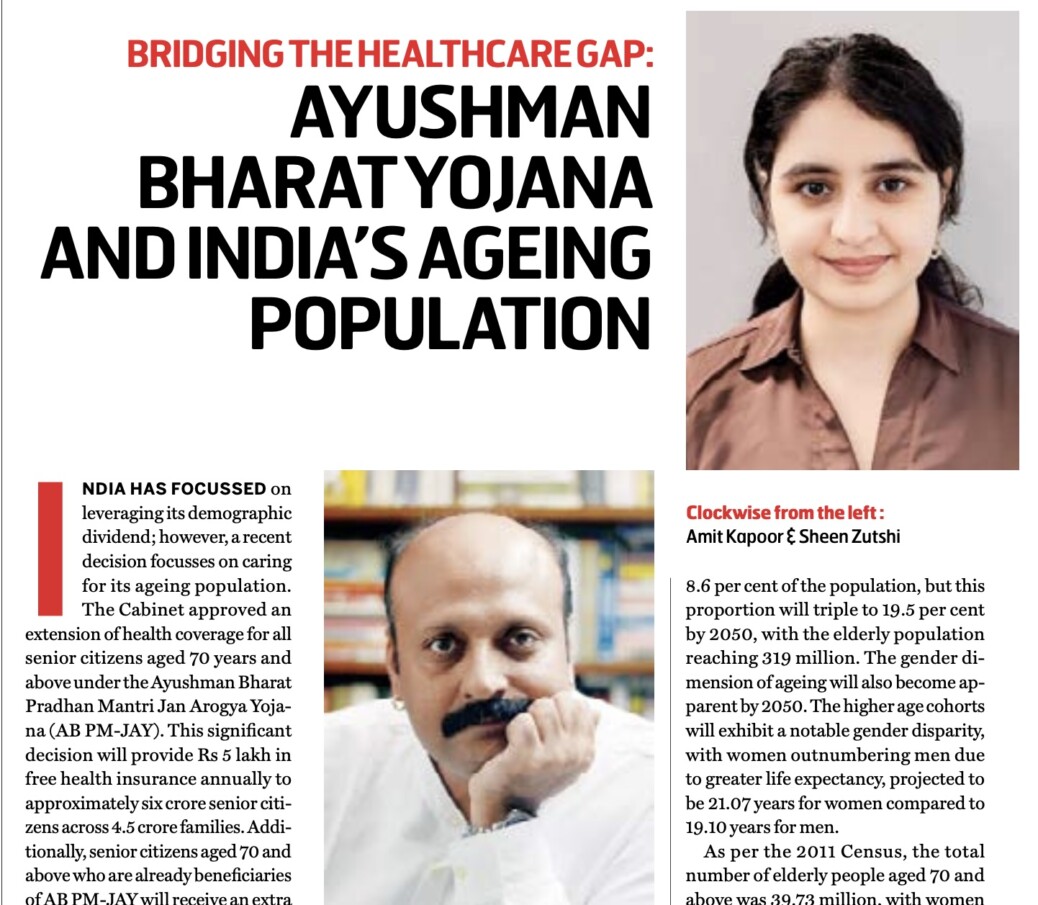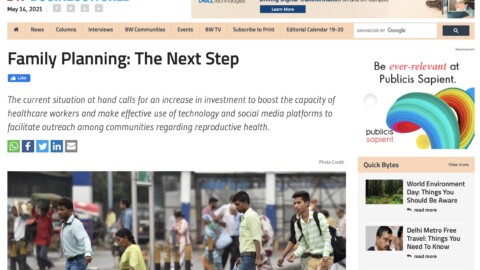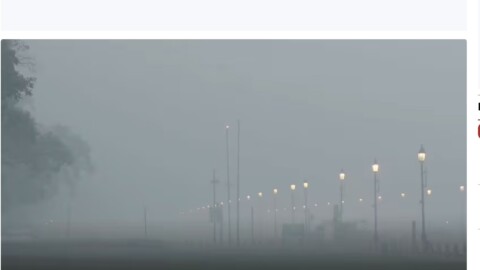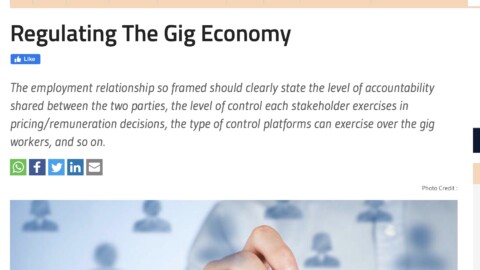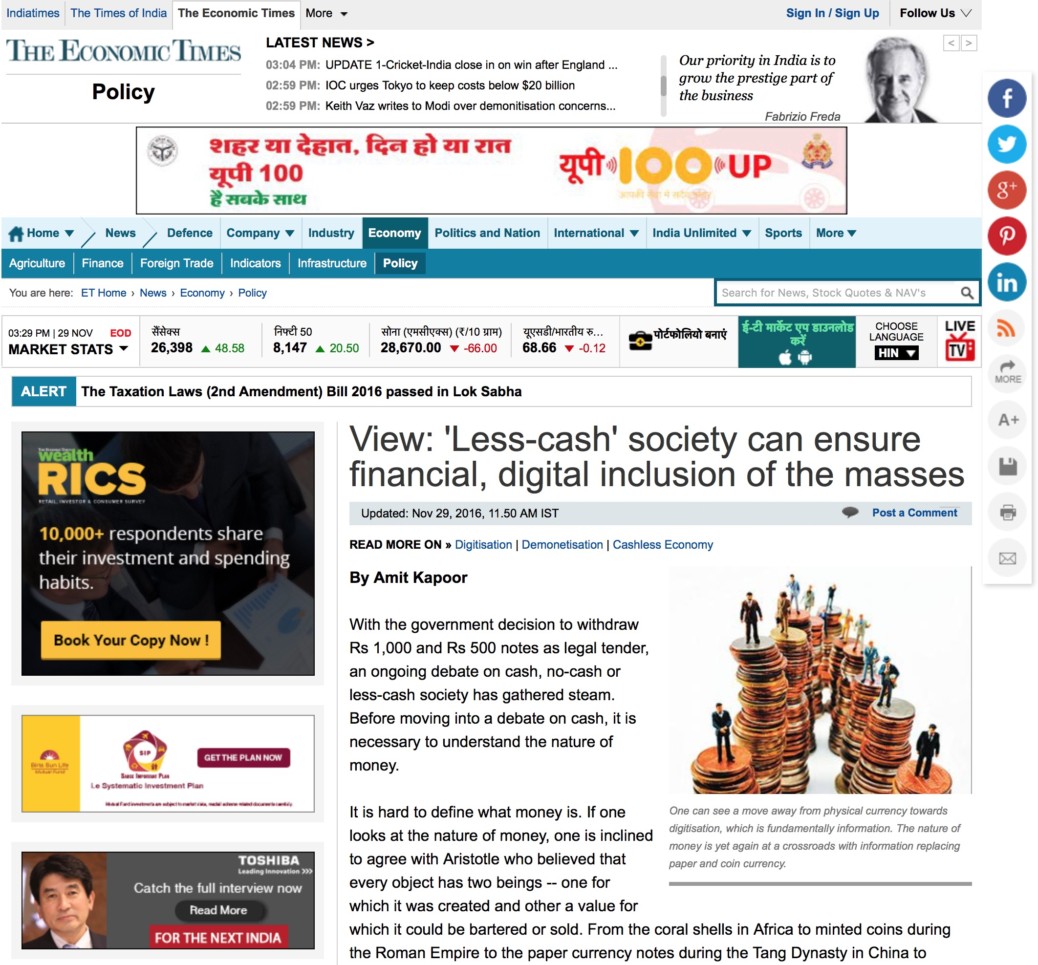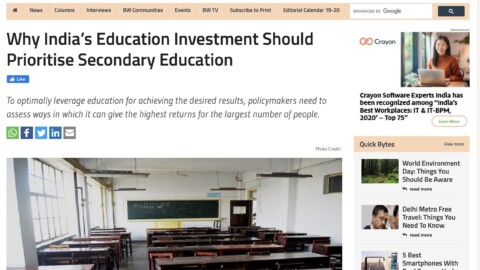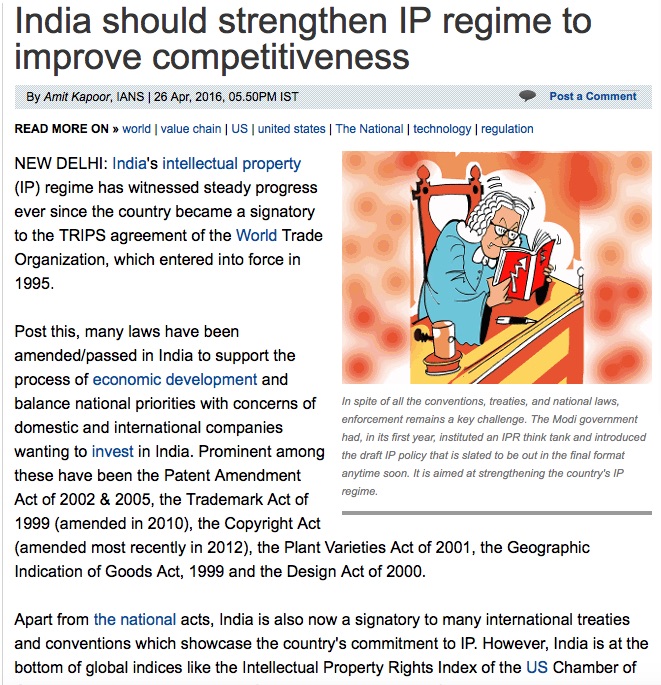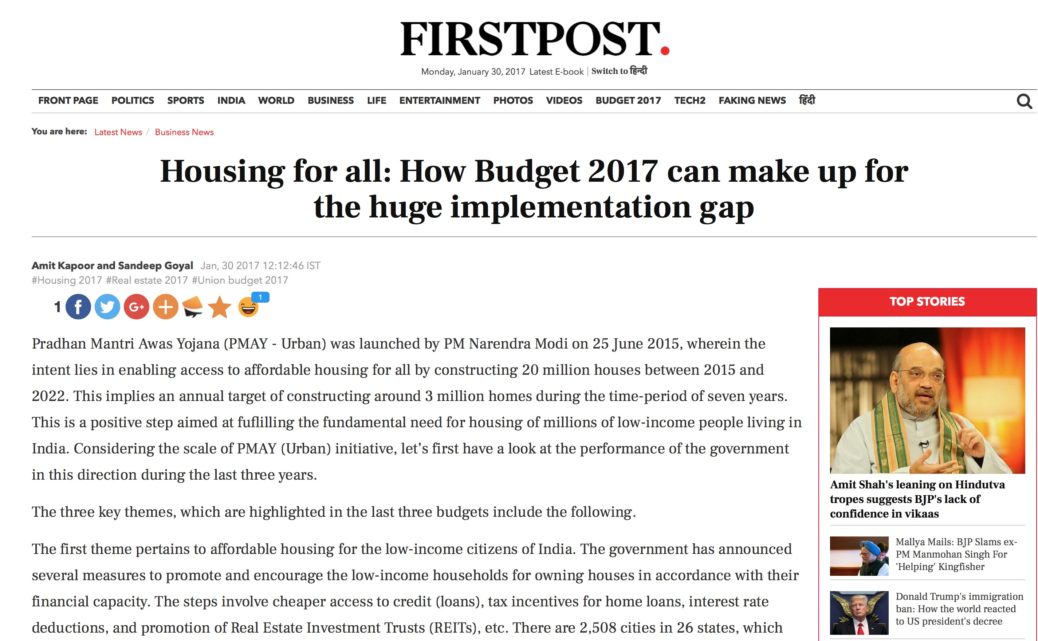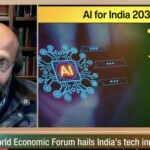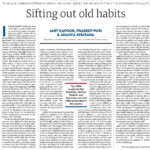By Amit Kapoor and Sheen Zutshi
Bridging the Healthcare Gap
India has focused on leveraging its demographic dividend; however, a recent decision focuses on caring for its ageing population. The cabinet approved an extension of health coverage for all senior citizens aged 70 years and above under the Ayushman Bharat Pradhan Mantri Jan Arogya Yojana (AB PM-JAY). This significant decision will provide ₹5 lakh in free health insurance annually to approximately 6 crore senior citizens across 4.5 crore families. Additionally, senior citizens aged 70 and above who are already beneficiaries of AB PM-JAY will receive an extra top-up cover of ₹5 lakh per year for their own healthcare needs, separate from the coverage allocated to younger family members. This is a welcome move. This signals a renewed focus on the elderly population, a group often overlooked in the development context.
India enjoys a demographic dividend with a median age of 28, so greying is not rapid. However, as the demographic dividend diminishes, we will be moving towards a significant demographic shift in the coming decades. By 2050, the median age is also expected to rise to 38, and the elderly population, particularly those over 60, will become the fastest-growing demographic group. The old-age dependency ratio will climb from 9.8 in 2020 to 20.3 by 2050, while the child dependency ratio is projected to fall below 30.
According to population projections by the Ministry of Health and Family Welfare (MoHFW), the population of senior citizens in India is projected to rise from 136 million in 2011 to 227 million in 2036, which means their share will increase to around 14.9 per cent of India’s population. Presently, the elderly constitute around 8.6% of the population, but this proportion will triple to 19.5% by 2050, with the elderly population reaching 319 million. The gender dimension of ageing will also become apparent by 2050. The higher age cohorts will exhibit a notable gender disparity, with women outnumbering men due to greater life expectancy, projected to be 21.07 years for women compared to 19.10 years for men.
As per the 2011 Census, the total number of elderly people aged 70 and above was 39.73 million, with women slightly outnumbering men. Of the 20.3 million elderly women, an overwhelming 62%—or 12.8 million—are widows, with 8.9 million of them residing in rural areas. These widowed women face heightened vulnerabilities due to the feminization of ageing, which results in longer lifespans but also leaves them more susceptible to social isolation, financial instability, and health issues. The breakdown of traditional family support systems due to migration, the rise of nuclear families, and changing societal attitudes have only worsened their plight. As the elderly population grows, particularly among vulnerable groups such as widowed women, the expanded coverage under Ayushman Bharat will be crucial in alleviating healthcare costs and ensuring access to essential services. The scheme can support older people in managing chronic health issues by providing comprehensive health insurance. It can reduce the strain on informal support systems disrupted by changing family structures and societal attitudes.
The demographic transition India is undergoing highlights the urgent need to address the challenges faced by older people. While the extended coverage under ABPM-JAY is a positive step, addressing broader healthcare challenges is crucial to fully meeting the ageing population’s needs. Rising hospitalisations among the elderly are inevitable. Without strengthening the healthcare ecosystem, healthy ageing goals cannot be achieved.
India’s hospital bed-to-population ratio of 1.3 beds per 1,000 people falls short of the World Health Organization’s recommended three beds per 1,000 people. The Economic Survey 2018-19 also highlighted the issue of limited hospital infrastructure, warning that the per capita availability of hospital beds could decline with population growth. States with higher population growth are struggling with low hospital bed availability, while states further along in the demographic transition will need to shift focus toward geriatric care. This calls for expanding medical facilities, preventive care, and support services by states for the elderly and training for caregivers and healthcare professionals to meet the growing need for long-term care.
Improving digital literacy is also essential to ensuring the benefits of Ayushman Bharat PM-JAY reach all eligible elderly individuals, especially those in rural areas. Many older persons face barriers in accessing information about the scheme due to limited knowledge of technology. State government-driven Initiatives for improving digital literacy among older adults can empower them to access crucial healthcare services and information independently. This will increase the scheme’s outreach and promote dignity, autonomy, and active ageing in society, particularly for those living alone or facing social isolation.
The Ayushman Bharat Yojana’s extended coverage aligns seamlessly with the core Sustainable Development Goal (SDG) principle of leaving no one behind. This step not only addresses the immediate healthcare needs of India’s elderly but also reflects a commitment to inclusivity and equity in healthcare, making it a policy of global relevance. It resonates with the UN Decade of Healthy Ageing principles (2020-2030), aiming to enhance the health and well-being of older adults.
The article was published with Business World on November 30, 2024.
